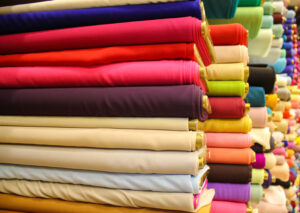
Textile Stocks Soar Amid Bangladesh Protests: Gokaldas Exports, Arvind, and Others Up 19%
Contents
- 1 Textile stocks bangladesh crisis
- 1.1 Textile Stocks Soar Amid Bangladesh Protests: Gokaldas Exports, Arvind, and Others Up 19%
- 1.1.1 The Market Reaction
- 1.1.2 Understanding the Bangladesh Crisis
- 1.1.3 Turmoil Creates Opportunity
- 1.1.4 Market Shares and Trade Dynamics
- 1.1.5 Bangladesh’s Export Performance
- 1.1.6 Impact of Current Unrest on Bangladesh’s Textile Industry
- 1.1.7 India’s Position in the Global Apparel Market
- 1.1.8 India’s Strategic Advantages
- 1.1.9 Conclusion
- 1.1.10 FAQs:
- 1.1.10.1 1.Why did Gokaldas Exports shares surge?
- 1.1.10.2 2.What is the China-plus-one strategy?
- 1.1.10.3 3.How has Bangladesh benefited from the China-plus-one strategy?
- 1.1.10.4 4.What impact does the current unrest in Bangladesh have on its textile industry?
- 1.1.10.5 5.How is India positioned to benefit from the situation in Bangladesh?
- 1.1.10.6 6.What are the primary markets for Bangladeshi textiles?
- 1.1.10.7 7.How does the Free Trade Agreement with the UK benefit Indian textile manufacturers?
- 1.1.10.8 8.What are the key challenges faced by the global apparel market?
- 1.1.10.9 9.How has Bangladesh’s share of apparel exports to the USA changed over recent years?
- 1.2 Textile stocks bangladesh crisis
- 1.3 Tata Power Shines: Q1 FY25 Net Profit Rises 31%, Reaching Rs 1,189 Crore
- 1.1 Textile Stocks Soar Amid Bangladesh Protests: Gokaldas Exports, Arvind, and Others Up 19%
Textile stocks bangladesh crisis
Textile Stocks Soar Amid Bangladesh Protests: Gokaldas Exports, Arvind, and Others Up 19%
Shares of Gokaldas Exports surged by 19% in intraday trading today, reaching ₹1,095 each and breaking a five-day streak of declines. Other textile stocks, including KPR Mills, Vardhman Textiles, Welspun Living, S.P. Apparels, and Nitin Spinners, also experienced rallies ranging from 5% to 17%.


The Market Reaction
Indian textile stocks surged in Tuesday’s trade, even as the main indices struggled to recover from a significant drop in the previous session. The rally in textile stocks was driven by investor optimism that the ongoing crisis in Bangladesh may prompt international buyers to shift their focus to alternative markets like India, which has a significant presence in the textile and apparel space.
Understanding the Bangladesh Crisis
Bangladesh has increased its market share in the apparel industry by leveraging the China-plus-one strategy. However, with political unrest escalating in Bangladesh, reports suggest that international buyers may adopt a Bangladesh-plus-one strategy, potentially benefiting India from this trend.
Against this backdrop, shares of Gokaldas Exports surged by 19% in intraday trading today, reaching ₹1,095 each and breaking a five-day streak of declines. Other textile stocks, including KPR Mills, Vardhman Textiles, Welspun Living, S.P. Apparels, Nitin Spinners, Arvind, and Himatsingka Seide, also experienced rallies ranging from 5% to 17%.


Turmoil Creates Opportunity
In recent years, apparel buyers have increasingly diversified their procurement sources, favoring India. This trend is supported by the Government of India’s (GoI) initiatives aimed at enhancing bilateral trade through agreements and treaties. Additionally, apparel buyers are consolidating their vendor lists, which benefits larger apparel manufacturers in India.
Despite these favorable conditions, Bangladesh has been outperforming India in apparel exports. The country has gained a larger share of global exports by leveraging the China-plus-one strategy and geopolitical tensions between the United States and China.
In 2019, Bangladesh’s share of apparel exports to the USA was 7%, while China’s was 30%. By 2023, China’s share had dropped to 22%, and Bangladesh’s share had risen to 9%. Meanwhile, India has also benefited slightly, increasing its share from 5% in 2018 to 6% in 2023. Similarly, Bangladesh’s share of apparel imports into the EU rose to 21% in 2023, while India’s share remained at 5%.
Indian players face lower market penetration in the UK due to tariff disadvantages compared to Pakistan, Turkey, and Bangladesh. However, a Free Trade Agreement (FTA) with the UK could enhance India’s competitiveness by allowing duty-free exports.


Bangladesh’s Export Performance
Bangladesh’s significant boost in apparel exports has contributed to a record high of $55.56 billion in total exports for the country in 2022–23. Apparel exports alone surged to nearly $47 billion, exceeding the previous record set in 2022 by approximately 10.27%, according to the Export Promotion Bureau (EPB).
The textile industry has become a major sector of Bangladesh’s economy, representing 80% of its exports and 15% of its GDP. The primary markets for Bangladeshi textiles are the European Union, United States, Canada, Australia, and Japan.
Impact of Current Unrest on Bangladesh’s Textile Industry
However, the current curfew and internet blackout in Bangladesh are severely affecting the manufacturing industry, especially the ready-made garments (RMG) sector. Industry insiders project a 15–20% decline in RMG exports for the next summer season (January–March 2025) due to recent disruptions and factory shutdowns.
Recent media reports showed that the European Union has postponed a new partnership agreement with Bangladesh due to the current unrest in the country.


India’s Position in the Global Apparel Market
As the global apparel market evolves over the coming decade, China is losing its dominance due to rising labor costs, geopolitical tensions, and ongoing trade issues with the US. This shift is prompting buyers to seek alternative production bases, creating opportunities for major Asian suppliers like India. However, Bangladesh faces challenges from a foreign exchange crisis, and Vietnam is hindered by high production costs.
India’s Strategic Advantages
India is well-positioned to capitalize on these changes, supported by a stable policy regime with the RoSCTL scheme extended until March 2026, government incentives for low-cost manufacturing locations, and the PLI scheme boosting investments in the MMF and technical textile sectors. Additionally, FTAs with the UK and EU hold significant potential for increasing textile trade.


Conclusion
The ongoing political unrest in Bangladesh has created a ripple effect in the global textile market, leading to a surge in Indian textile stocks. With international buyers potentially adopting a Bangladesh-plus-one strategy, India stands to gain significantly. Supported by favorable government policies and trade agreements, India’s textile industry is well-positioned to capitalize on this opportunity and strengthen its presence in the global market.
FAQs:
A. Gokaldas Exports shares surged due to investor optimism about international buyers shifting focus to India amidst the political unrest in Bangladesh.
2.What is the China-plus-one strategy?
A. The China-plus-one strategy involves diversifying production bases to countries other than China to mitigate risks associated with over-reliance on a single country.
3.How has Bangladesh benefited from the China-plus-one strategy?
A. Bangladesh has increased its share in the apparel export market by offering an alternative to China, leveraging lower labor costs and favorable trade agreements.
4.What impact does the current unrest in Bangladesh have on its textile industry?
A. The unrest has led to factory shutdowns and a projected 15–20% decline in RMG exports for the next summer season.
5.How is India positioned to benefit from the situation in Bangladesh?
A. India is well-positioned to attract international buyers looking for alternative markets, supported by favorable government policies and trade agreements.
6.What are the primary markets for Bangladeshi textiles?
A. The primary markets for Bangladeshi textiles include the European Union, United States, Canada, Australia, and Japan.
7.How does the Free Trade Agreement with the UK benefit Indian textile manufacturers?
A. The FTA with the UK could allow duty-free exports, enhancing India’s competitiveness compared to countries like Pakistan, Turkey, and Bangladesh.
8.What are the key challenges faced by the global apparel market?
A. Key challenges include rising labor costs, geopolitical tensions, and trade issues between major economies like the US and China.
A. Bangladesh’s share of apparel exports to the USA increased from 7% in 2019 to 9% in 2023, while China’s share dropped from 30% to 22%.
10.What initiatives has the Indian government taken to support the textile industry?
A. Initiatives include the RoSCTL scheme, government incentives for low-cost manufacturing locations, and the PLI scheme to boost investments in the MMF and technical textile sectors.





















3 comments